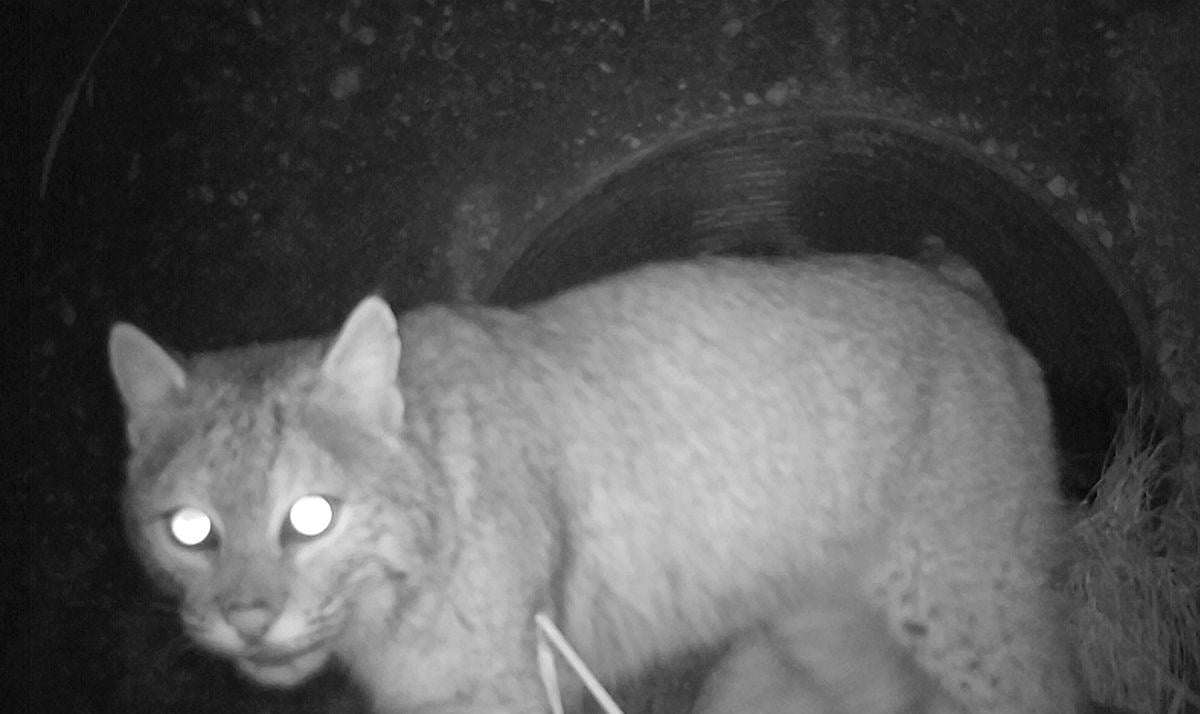Caught on camera
Finding the wild in the city (This first appeared in The Other Paper)
 |
| A bobcat eyes our camera near Patchen Road in South Burlington |
What lives in those woods? This question has started many a scientific career. In the case of trees, a simple stroll may provide the answer. But sometimes we need other tools such as microscopes. Mammals are notoriously difficult to watch which explains the abundance of birders while mammal watchers are thin on the ground.
One inexpensive tool exponentially increases your chances of answering the question “what mammal lives here?” Infinitely patient “trail cameras” or “camera traps” allow even the worst mammal tracker to detect, photograph and appreciate the truly amazing mammals that frequent our woods, fields and back yards.
Starting in November, the South Burlington participants in the Vermont Master Naturalist program teamed up with four Saint Michael’s College students to install 25 cameras in South Burlington. We focused 16 cameras on the Underwood Property on Nowland Farm Drive and the adjacent woods to the south. A second set was pointed at I-89 underpasses and culverts near the Whale Tails and Centennial Woods.
Predictably, we photographed more than a few squirrels, deer and raccoons, but I found the spectacular predators we photographed far more fascinating. We learned from our cameras that we share South Burlington with no fewer than six native predatory mammal species, and a couple of domestic species.
It will surprise few that our photographs included coyotes and one in particular was quite startled by our camera beating a hasty retreat into the woods. Red foxes were rarer and seemed less camera shy. The first of a pair of grey foxes emerging from a culvert paused for a few frames to eye our camera before going about his or her business. The likely mate of the first popped out a minute later without a second glance.
One of our Centennial Woods cameras detected a mink on its first day, but this species was rare by comparison to foxes and coyotes. Fishers, or “fisher cats” as many call them, cousins of the mink, were slightly more common.
Fishers of course are not cats at all, but we did photograph some actual cats. Bobcats showed up in all three locations making them the most widely detected of the native carnivores during our brief study. We photographed a few domestic dogs and a domestic cat made frequent rounds of our Underwood cameras.
As an ecologist, I was quite pleased to see such a healthy community of small predators wedged among our dwellings, highways and human communities. These predators, together with the more omnivorous raccoons and opossums we photographed, help control rodent populations that might otherwise infest our town.
We did, indeed, detect some of these rodents. In addition to squirrels, mice showed up occasionally, but not in high numbers. This is in no small part due to the diverse predators keeping them in check and reducing our chances of contracting Lyme disease. Thankfully, at least from my point of view, we did not detect a single rat. I was curious if this was some fluke of camera placement, so I went to iNaturalist, a free database of natural history observations gathered by citizen scientists and our numbers mirror trends in Vermont.
I hope that our photographs are of interest and can contribute to a growing appreciation of the carnivores that help keep our yards pest free. And, if you decide that a trail camera is another way for you to enjoy the outdoors, for science fair, or just to ask, “who lives in my yard?”, please consider contributing your photographs to iNaturalist where your fellow scientists will appreciate the data and help with identifications.
Declan McCabe is a South Burlington resident, naturalist and professor of biology at Saint Michael’s College.
This comment has been removed by a blog administrator.
ReplyDelete